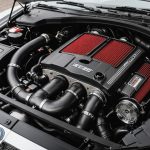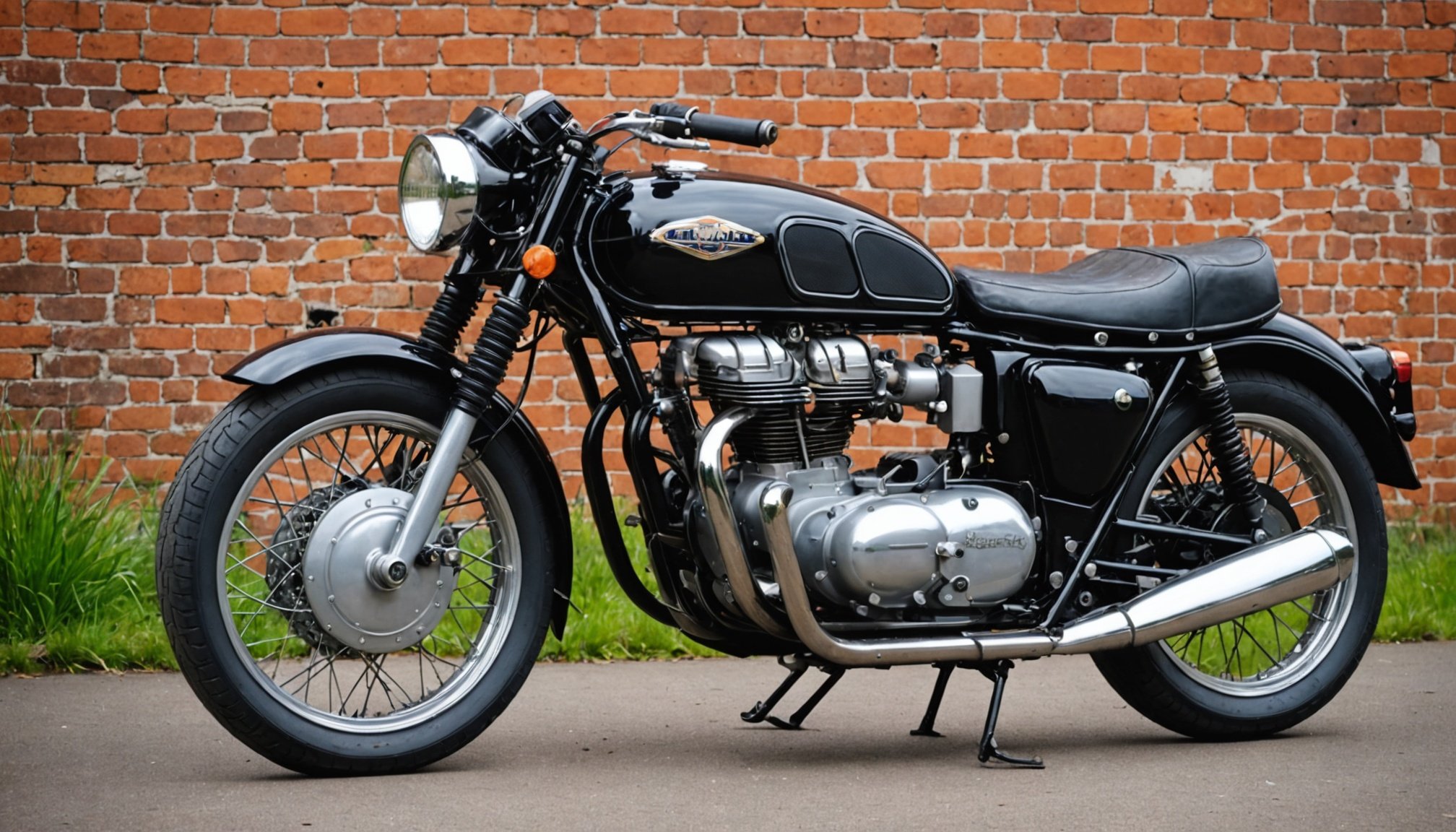Understanding Vintage British Motorcycles and Their Unique Needs
When delving into the world of vintage British motorcycles, it’s crucial to understand their unique paint needs and aesthetic characteristics. These machines, with their classic lines and timeless design, have a charm that comes from combining historical integrity with a touch of personal flair. Whether you own a Triumph, BSA, or Norton, recognizing the nuances of each model is essential.
The selection of paint plays a significant role in maintaining the motorcycle’s authentic look. A proper motorcycle respray necessitates focusing on historically accurate paints that enhance the vintage appeal. Historically, these motorcycles used specific paint techniques and finishes, predominantly enamels, owing to their glossy sheen and durability. However, modern restorers must balance this with long-term resilience and visual impact.
Additional reading : Enhance your british sports coupe”s power: the ultimate diy guide to installing a cold air intake system
Factors influencing paint choices include the motorcycle’s original factory finish, the desired level of gloss, and environmental conditions. For instance, choosing a rust-resistant paint might be vital if the bike is meant for open-air displays or frequent use.
In summary, understanding the unique paint needs of vintage British motorcycles is pivotal. By carefully selecting paints that match the original specifications and suit modern standards, enthusiasts can preserve the historical presence while adding their personal touch.
Also to see : Comprehensive handbook for sealing your british off-road vehicle’s electrical system against water damage
Maintenance and Care for Resprayed Motorcycles
To maintain the luster of a motorcycle paint maintenance, adopting best practices is essential. Care tips often begin with regular cleaning using gentle, pH-balanced solutions. This prevents paint degradation caused by dirt and environmental contaminants. Always rinse thoroughly and dry with a soft cloth to avoid streaks.
Recommended Cleaning Products and Techniques focus on non-abrasive methods. Use microfiber cloths or sponges to prevent scratching. Carnauba wax can be applied post-cleaning, providing an additional protective layer that enhances shine. Stay cautious about over-polishing, which may thin the paint over time.
For protective coatings, applying specialised sealants or ceramic coatings can significantly extend paint life. These coatings form a robust barrier against UV rays, moisture, and pollutants. This keeps the paint vibrant and lessens the need for frequent touch-ups. Innovative products, like liquid glass coatings, offer superior protection by creating a reflective, hard coating. Applying these requires precision; thus, following manufacturer instructions ensures maximum effectiveness.
Remember, the climate where the motorcycle is stored plays a vital role. Storing in a cool, dry place away from direct sunlight helps sustain the quality of the respray, allowing enthusiasts to enjoy their motorcycle’s vintage charm for years to come.
Types of Paint Suitable for Vintage Motorcycles
When considering a motorcycle respray for a vintage British motorcycle, opting for the right type of paint is essential. Different paints offer distinct advantages, affecting both aesthetics and longevity.
Overview of Enamel Paint
Enamel paints are a classic choice for vintage motorcycles due to their historical authenticity and glossy finish. They provide a durable and hard surface, making them ideal for protecting against the elements. Enamel is relatively easy to apply and can create a brilliant shine, enhancing the motorcycle’s unique paint needs.
Benefits of Acrylic Paint
Acrylic paints offer the benefit of a faster drying time and are flexible, preventing cracks over time. They’re easier to work with for those embarking on a DIY project and can be an excellent choice for adding layers without extensive downtime. Acrylics also offer a wide range of colours, which is particularly beneficial for precise colour matching.
Pros and Cons of Polyurethane
Polyurethane paints are praised for their exceptional durability and chemical resistance. While they can be more challenging to apply, they provide a robust finish that withstands wear. However, considerations must be made for the cost and potential complexity in achieving the desired finish for those less experienced with a motorcycle respray.
Essential Color Matching Techniques
For a vintage British motorcycle respray, accurately matching colours is key to preserving its original charm. Begin by identifying the paint codes specific to your bike’s model and year. These codes are traditionally found in manufacturer manuals or on metal tags affixed to the motorcycle. Such codes ensure you’re starting with a reference point that honours the motorcycle’s historical accuracy.
Utilising a color wheel aids in understanding the relationship between colours and matching hues if the original codes are unattainable. This tool is invaluable for selecting complementary or analogous shades that align with traditional vintage palettes. Modern technology offers digital colour matching devices, further boosting precision in achieving desired results.
Tools and resources like specialty paint stores often provide assistance, employing spectrophotometers to match modern paints with vintage tones. They can mix paints on-site for a perfect match, whether you’re working with enamel, acrylic, or polyurethane. Online forums and social media groups often share tips and experiences, connecting enthusiasts seeking similar vintage hues.
Embracing these techniques and resources ensures your motorcycle respray reflects both its unique past and your attention to detail, keeping the vintage aesthetic truly impeccable.
Tools and Supplies Needed for a Respray
When preparing for a motorcycle respray, having the right motorcycle paint supplies is essential for achieving a flawless finish. Each tool and supply has a unique role, ensuring both the application process and the final result meet your expectations.
List of Necessary Tools
A spray gun is a crucial tool for respraying a motorcycle, providing even coverage and a professional appearance. High-quality sandpaper, preferably a variety of grits, is necessary for prepping surfaces effectively. Mixing cups and stirring paddles ensure the paint’s consistency is perfect before application.
Recommended Supplies for Preparation
Preparation supplies should include primers tailored to your chosen paint type—whether enamel, acrylic, or polyurethane—as this ensures adhesion and longevity. Tape and masking paper are vital for protecting parts of the motorcycle that won’t be painted. Solvents are also necessary to clean surfaces before painting.
Importance of Protective Gear
Never underestimate the significance of protective gear. Items such as respirators, safety glasses, and gloves protect you from harmful fumes and overspray. Remember that your safety is just as paramount as achieving a top-notch finish. Investing in quality protective gear contributes to a safe respray environment and a superior outcome for your vintage British motorcycle.
Step-by-Step Application Process
Undertaking a motorcycle respray can be a rewarding experience, especially when armed with a DIY painting guide. Properly applied paint application not only elevates a vintage British motorcycle’s appearance but also protects it from environmental damage.
Preparing the Surface
Begin by stripping the old paint and ensuring any rust is removed. Using different grits of sandpaper, smooth the surface, progressing from coarse to fine grits for optimal results. Clean the area with a solvent to remove any dust or oil.
Priming and Base Coating
Once the surface is prepped, apply a primer suitable for your chosen paint type, whether enamel, acrylic, or polyurethane. The primer ensures better paint adhesion and surface sealant. Allow it to dry completely, then apply the base coat in thin, even layers. A spray gun often yields the best coverage.
Applying the Topcoat and Finishing
After the base coat, apply the topcoat for added durability and shine. Between each coat, lightly sand with fine sandpaper to ensure uniformity. Make sure to follow all manufacturer guidelines for drying times and conditions.
Avoiding Common Mistakes
Ensure your workspace is clean and dust-free to prevent contamination. Avoid rushing the drying process and adhere strictly to dry*ing times to prevent a mishap that could ruin the finish.
Inspiration and Case Studies
Discovering motorcycle transformation examples can be a delightful source of motivation for enthusiasts considering a respray. Successful transformations not only showcase technical skill but also illustrate the powerful aesthetic potential of vintage British motorcycles. In interviews, DIY enthusiasts often share unique insights into their respray journeys, bridging the gap between imagination and realization.
A standout example involves a 1965 Triumph Bonneville, which underwent a stunning metamorphosis. The owner meticulously selected historically accurate enamel paint, preserving its vintage allure while incorporating contemporary durability. Through a rigorous DIY project, the transformation demonstrated how a thoughtful motorcycle respray could bring a time-worn machine back to life.
Visual narratives can further inspire. Before-and-after comparisons allow individuals to visually engage with each project’s impact. Seeing an old BSA shining in its renewed glory encapsulates the gratification of breathing new life into these classic machines.
Whether it’s a single-change respray or a complete overhaul, each project tells a unique story. As a resource, online communities and forums abound with successful respray stories, offering practical tips and encouraging novices to undertake their own restorations. Such examples highlight the creative possibilities and dedication involved in maintaining these vintage motorcycles’ automotive heritage.
Resources for Purchasing Paint and Supplies
When embarking on a motorcycle respray for a vintage British motorcycle, finding reputable sources for paint and supplies is paramount. Knowing where to buy motorcycle paint ensures access to quality materials that will uphold the motorcycle’s vintage charm.
Online Retailers for Motorcycle Paint
Online platforms provide convenience and variety; look for retailers specialising in automotive paints. They often stock a broad range of products including enamel, acrylic, and polyurethane options. Well-reviewed sites offer the advantage of customer feedback and detailed product descriptions that aid in selecting the suitable types of paint.
Local Supply Stores and What They Offer
Visiting local paint or automotive supply stores allows for in-person advice and immediate purchase. These stores typically offer expert recommendations, ensuring compatibility with the motorcycle’s unique paint needs. Additionally, they may offer custom paint mixing services, essential for precise color matching.
Recommended Brands for Quality Paint
Brands with a strong reputation for durability and finish are essential. Consider those known for robust formulations and a wide palette selection. Seek out those that offer in-depth guidance on application techniques, enhancing both the respraying experience and outcome. Whether online or in-store, prioritising quality brands ensures that each respray not only preserves historical integrity but also endures the test of time.











